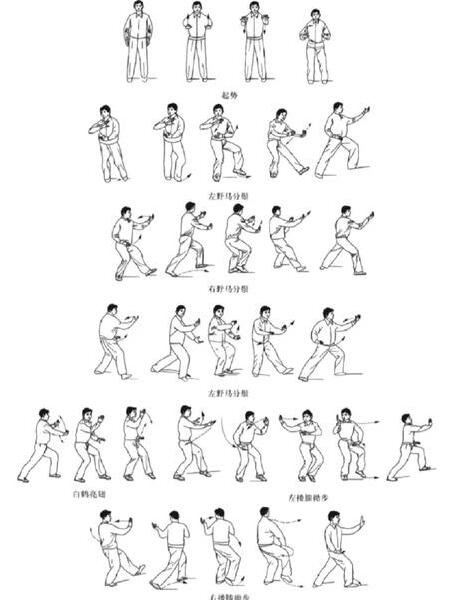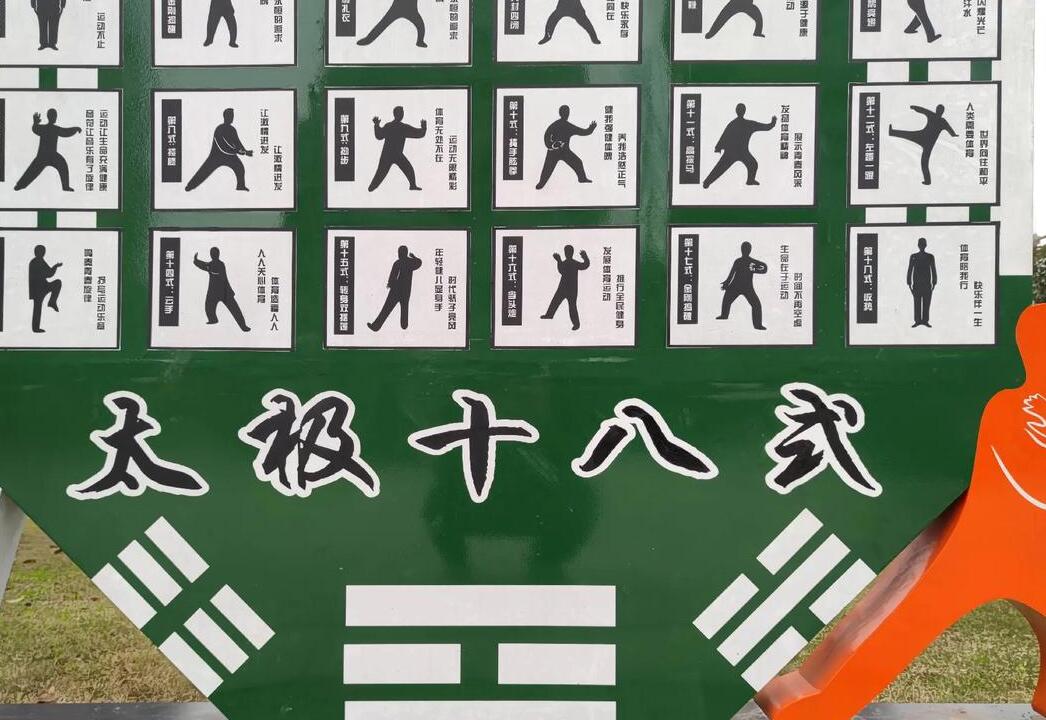The Eighteen Postures of Tai Chi are full of unique attractions. As a representative action combination of traditional Chinese Tai Chi, it combines static and dynamic, strong and soft, offensive and defensive characteristics. This set of movements not only strengthens the body, but is also an artistic expression.
The Origin of the Eighteen Postures of Tai Chi
Tai Chi carries rich historical and cultural heritage. After a long period of development, it has gathered the wisdom essence of many predecessors. The Eighteen Tai Chi postures may be a simplified version refined by predecessors based on long-term practice experience, making it easier for the public to learn. In addition, the content of traditional Tai Chi is complicated, while the Eighteen Styles of Daoism Meditation retain the core content while simplifying the process. Many people think that the origin of Tai Chi is mysterious, but in fact it is closely connected with folk traditions passed down from generation to generation. It is through the mutual integration and improvement of many schools that excellent exercises such as the Eighteen Postures of Tai Chi have been born.
In ancient times, people began to explore the preliminary form of Tai Chi in order to enhance their physical fitness and self-defense. Under such historical conditions, the Eighteen Forms of Tai Chi were gradually established, allowing practitioners to more deeply understand the essence of Tai Chi.
Actions and features

The movements of the Eighteen Tai Chi poses are gentle and consistent. Every movement seems to be describing a text, as smooth as clouds and as coherent as water. For example, "White Crane Spreads Wings", when the arms are stretched out, it is like a white crane flapping its wings and soaring, which is both elegant and powerful. In addition, the shifting of the center of gravity in the Eighteen Postures is very clever. Whether it's the movement of the feet or the circles of the arms, they all appear steady and powerful. Its movement emphasizes a circular path, which embodies the philosophy of harmony in Chinese culture.
It has a full sense of rhythm, and the movements reveal tranquility, and the tranquility contains the power of waiting. Take "Hand Dancing Pipa" as an example. It seems calm and calm, but in fact it contains the ability to maintain balance and respond at any time.
Health benefits
The Eighteen Postures of Tai Chi are of great benefit to your health. It can stretch muscles Taoist Tai Chi and improve the body's flexibility. Many consistent practitioners find that their joints move more freely. In terms of breathing, practicing deep breathing can increase lung capacity. In the long run, it will go a long way in regulating breath circulation. It's like injecting fresh air into the body and purifying it of impurities.

The mentality will be greatly affected. Practicing the Eighteen Postures of Tai Chi can help people calm down and put aside the worries in life temporarily. In the busy and anxious modern society, this kind of practice can effectively relieve stress and make people feel calm and energetic.
Study suggestions
If you want to practice the Eighteen Postures of Tai Chi, it is best to find a trustworthy master. The master can guide you to correct your movements and help you quickly understand the essence. Trying it on your own may lead to a lot of mistakes. Also, patience is required. Don't be eager for quick success, because Tai Chi focuses on gradual and profound practice. When exercising, the rhythm of practice should be adjusted according to personal physique.
It is better to practice in a quiet and comfortable space. For example, a corner of a park or a quiet courtyard tai chi 18. Practicing in such places seems to be like dancing with nature. Are you willing to try to learn the Eighteen Postures of Tai Chi? I look forward to your enthusiastic likes and reposts, and you are also welcome to share your Tai Chi experience in the comment area.


